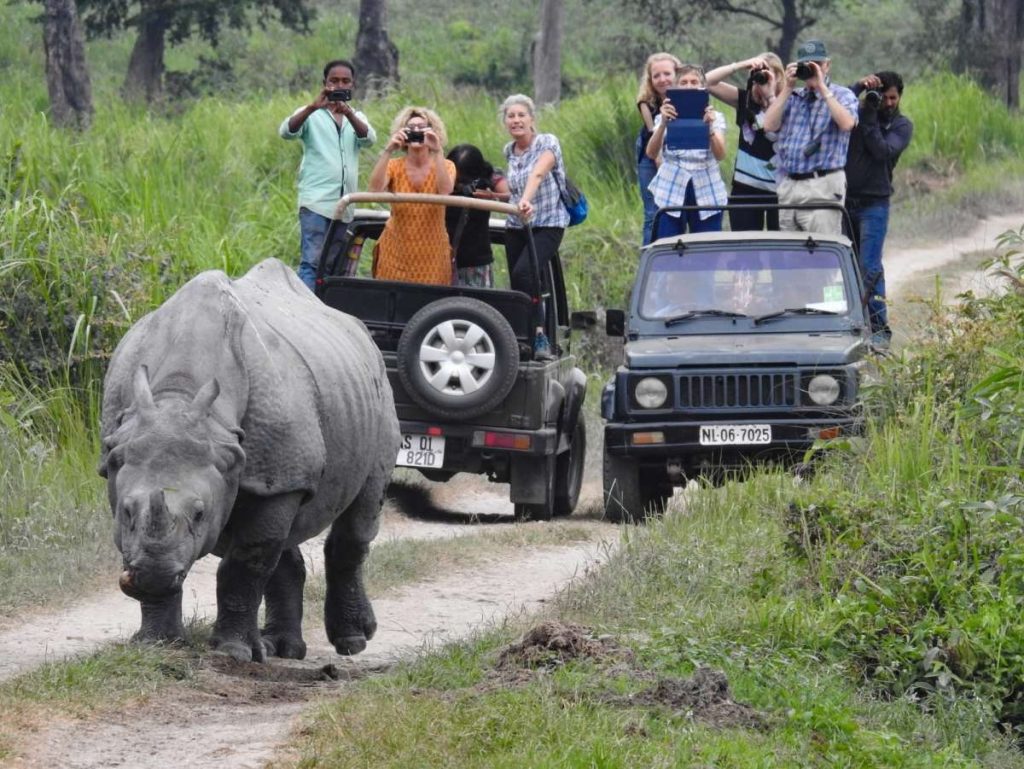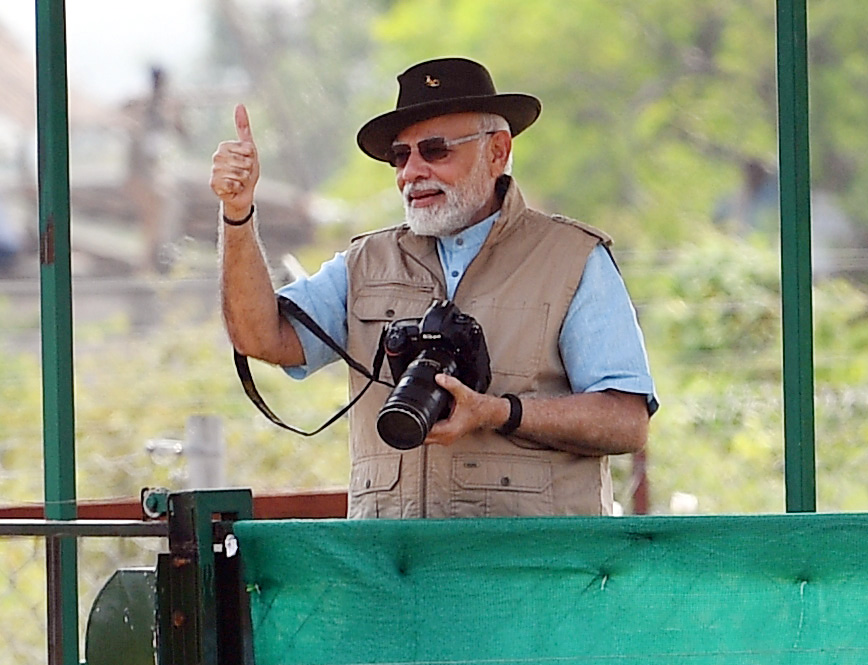A detailed multi-pronged strategy is needed to ignite Indian tourism as a movement on a global scale, writes G. Kamala Vardhana Rao
The vision for the Indian economic rise can be summed up by the three-T mantra aired by the honourable Prime Minister Narendra Modi to boost to the Indian economy on a massive scale. The message has been driven home to all levels of the government machinery, various ministries, overseas missions and the district that tourism along with trade and technology will be key drivers of the rise of a New India.
India has abundant tourism products in various niche segments, some completely unique and indigenous, such as Yoga and Ayurveda. India is also the birthplace of Buddhism. As one of the oldest civilizations, India is steeped in culture, history and spirituality. Its civilizational bedrock continues to exude a mystic appeal and attraction in several other parts of the world.
Simultaneously, India is a modern nation, advanced in technology, scientific prowess and medical acumen. The nation fulfils 62% of the world’s vaccine requirements and exports 20% of global generic drugs.
India is also a network of 981 protected areas including 566 Wildlife Sanctuaries, 104 National Parks, 214 Community Reserves and 97 Conservation Reserves. The Indian Himalayas cover 5 lakh square kilometres, and the coastline is 7500 km long.
The country has as many as 40 UNESCO World Heritage sites as of 2022. For ease of travel, there is a prolific rail network, modern highways and expressways, 103 airports of which 34 are international hubs.

The stage is therefore set for tourism to emerge as a key driver for the rise of the Indian economy, as well as a significant foreign exchange earner. Through a strategic vision and a well- defined roadmap, India can witness an exponential rise in tourist arrivals!
A detailed multi-pronged strategy is therefore needed to ignite Indian tourism as a movement on a global scale. And there are plenty of opportunities to do so.
For instance, India’s Global Footprint Dating back to the 14th century already resonates well with its ASEAN neighbourhood. Of late, the culture sector is spearheading the development of the Narrative of ASEAN Identity, as part of the continuing efforts to promote awareness and foster a shared identity.
In the Pacific, India’s links with Fiji commenced in 1879 when Indian labourers were sent there under the indentured system to work on sugarcane plantations. Between 1879 and 1916 around 60,000 Indians were brought to Fiji, with traders following soon after. Currently 37% Fijians are of Indian origin.
The Silk Route and the Spice Route both tie the Indian sub-continent to the central Asian and Asian nations in a historical and trade linkage, with much amalgamation of art, culture and cuisine. In the current scenario, Silicon Valley associates its sustenance to Indians that include leading economists, academics and doctors.
Similarly, India sportspersons, film-makers and artistes are carving a niche for themselves in the world. In other words, India is exerting its soft power in the globe, thereby shaping a much broader narrative in multilateral context, ranging from military, economic, political to the geo-cultural. Strong and strategic communication lie at the core of this rise in reckoning.
Chalo India!
Banking on this global position, and with a view to leverage it, PM Modi gave a tourism-boosting mandate to the Indian diaspora during his visits to Europe. Designating the expatriate population of Indians as ‘Rashtradoots’, he urged each person to inspire five non-Indian friends to visit India and experience first-hand the strength, diversity and beauty of the country.
The Indian diaspora overseas approximates 32 million. Countries with the highest number of Indians include USA (4.2 million), United Arab Emirates (3.4 million), Malaysia (2.9 million), Saudi Arabia (2.6 million), Myanmar (2 million), United Kingdom (1.76 million), Canada (1.7 million), Sri Lanka (1.6 million), South Africa (1.5 million) and Kuwait (1 million). If each Indian accrues five non-Indians travelling to India, the resultant potential foreign arrivals in India would be in excess of 150 million. This move of “Chalo India!” is therefore a game-changer for the Indian tourism industry. The growth rate of tourist arrivals would transform from a borderline double-digit into a three-digit bracket, revamping the tourism sector, globally accepted as the worst casualty of the pandemic, into a strong thrust sector.
Outreach and impact of each of the stakeholders and protagonists will be the key driver towards the success of Chalo India. Prolific amplification by individuals and communities of the diaspora on purpose-specific social media pages will be necessary to create a robust and ongoing activity and hype, especially on Facebook and Instagram.
In fact, work under the Chalo India initiative has already begun. A Chalo India Gujarati Association has been formed in the United States of America with an active Facebook page and a live upcoming event slated for visiting India in the near future. Inaugural sessions are being rolled out by embassies for diaspora communities to provide relevant information and elaborate on the role of the individuals. A materialisation linked reward and recognition matrix is also envisaged as the movement gathers momentum.

Indian restaurants can play a vital role in popularising various tourist destinations of India by showcasing video-films and conducting regular culinary festivals. Many Indian festivals are celebrated in popular areas of mega cities such as Times Square, New York, Trafalgar Square, London etc. Indian Associations can also form Indian tourism clubs which can regularly conduct quiz competitions, photography competitions amongst school and college students in the cities that they live. Medical value tourism is emerging as an important sector leading many foreigners to visit India for regular treatments as well as Ayurveda and wellness.
Indian diaspora can play a major role in providing sufficient information to their foreign friends on this aspect as well. There are around 37 Joint Commission International (JCI) accredited hospitals and 513 National Accreditation Board for Hospitals & Healthcare Providers (NABH) accredited hospitals in India. To compare cost of treatment in India with that in Thailand, Malaysia, Singapore, Turkey, and South Korea, heart bypass would cost USD 7900 against USD 15000, USD 12100, USD 17200, USD 13900, and USD 26,000, respectively. Similarly, hip resurfacing would cost approximately USD 9,700 in India compared to USD 16,350 in Singapore and USD 19,500 in South Korea. Affordable, high-quality treatment is a major factor for international tourists to choose elective treatment in India. A visit for medical purposes can be followed with a memorable sight-seeing tour, a beneficial outcome for the visitor as well as India.
The longevity and success of Chalo India rests on several pillars of development within the country. Hygiene perspective is still a stumbling block for many discerning foreigners. Infrastructure for last-mile connectivity, comprehensive destination development, and green transport around protected monuments will need to be expedited towards enhancing convenience and ease of travel. Education of the general public on behaviour towards touristic visitors as well as skilling the direct workforce is mandatory to create pleasant experiences.
Most tourist centric economies in the world have an essential curricular component of foreign languages for tourism related graduates. Ministry of Tourism has rolled out basic language training for cab drivers, but IHMs and IITTM have a major role to play towards training of hotel staff, guides and ancillary service providers. Launch of NIDHI (National Integrated Database of Hospitality 4 Industry) and SAATHI (System for Assessment, Awareness & Training for Hospitality Industry) have leveraged digital mode to provide readily available database and assessment framework, respectively.
Benchmarking with best-in-the-world tourism policies, plans and methodology adopted by tourism boards would provide a basis on which to build a robust platform and chart a great success story of Chalo India initiative.
(The author is director general, Ministry of Tourism, GoI and managing director ITDC. Views expressed are personal and exclusive to India Narrative)
(The content is being carried under an arrangement with indianarrative.com)

Leave a Reply